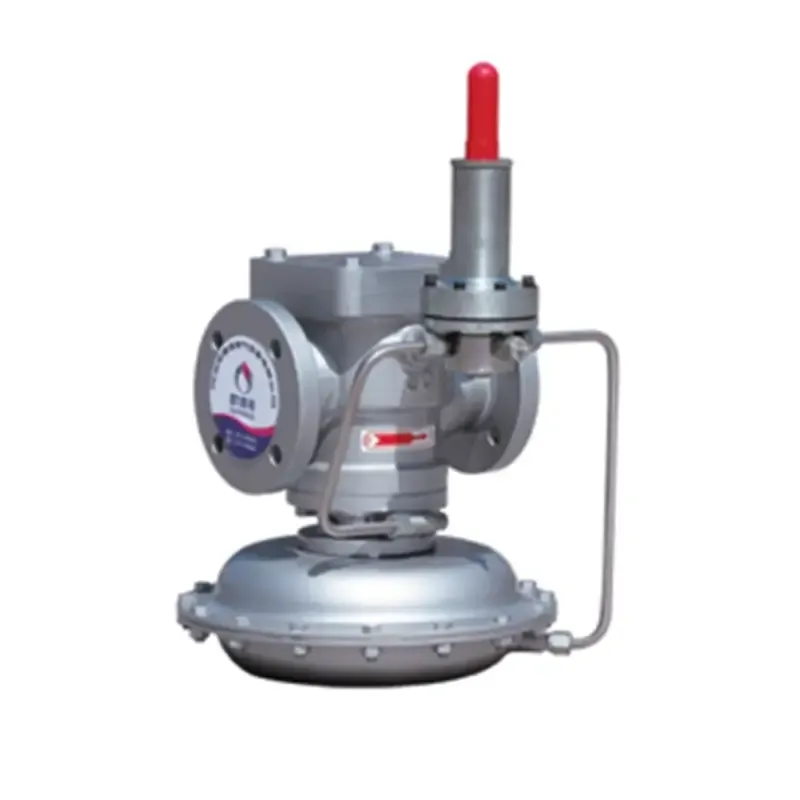
Dec . 04, 2024 16:46
Back to list
صمام التنفيس
Understanding Pressure Relief Valves A Critical Component in Safety Systems
Pressure relief valves (PRVs) play a crucial role in maintaining safety in various industrial applications. These devices, often referred to as safety valves or blow-off valves, are designed to prevent excessive pressure build-up within systems, ultimately protecting equipment, personnel, and the environment from potential hazards.
What is a Pressure Relief Valve?
A pressure relief valve is a mechanical device that automatically releases excess pressure from a system when it exceeds a predetermined level. This action prevents catastrophic failures, such as explosions or equipment ruptures, which can lead to significant damage and safety risks. PRVs are commonly used in steam boilers, gas pipelines, chemical processing plants, and other systems where pressure management is essential.
How Do Pressure Relief Valves Work?
The basic operation of a pressure relief valve is relatively straightforward. It consists of a valve seat, a spring, and a discharge opening. Under normal conditions, the valve remains closed, allowing the system to function optimally. However, as pressure builds up due to various factors, such as temperature increases or blockages, the force exerted by the internal pressure will eventually overcome the tension of the spring, causing the valve to open. This allows excess pressure to escape, reducing the risk of damage or failure. Once the pressure drops back to a safe level, the spring re-closes the valve, restoring normal operation.
Types of Pressure Relief Valves
There are several types of pressure relief valves, each designed for specific applications. The most common types include
1. Spring-loaded Valves These are the most widely used PRVs. They function based on a spring mechanism and are available in various sizes and pressure ratings.
2. Pilot-operated Valves These valves are used in systems requiring precise pressure control. They utilize a smaller pilot valve that opens or closes based on system pressures, allowing for more sensitive operation.
.
Each type of valve has its advantages and applications, and the choice of valve depends on the specific requirements of the system in which it will be installed.
صمام التنفيس

Importance of Pressure Relief Valves
The significance of pressure relief valves cannot be overstated. In industries such as oil and gas, chemicals, and manufacturing, where pressure systems are integral, the failure to regulate pressure can lead to disastrous consequences.
- Safety PRVs are essential in preventing accidents that can result in injuries or fatalities. They act as a first line of defense in maintaining a safe working environment.
- Equipment Protection By controlling pressure levels, PRVs help protect pumps, pipes, boilers, and other equipment from damage caused by overpressure, thereby extending the lifespan of critical assets.
- Environmental Protection In industries where hazardous materials are handled, the uncontrolled release of pressure could lead to spills or toxic leaks. PRVs play a vital role in minimizing environmental risks.
Maintenance and Best Practices
To ensure optimal performance, regular maintenance of pressure relief valves is essential. This includes
- Periodic Testing Valves should be tested according to the manufacturer’s specifications to ensure they open and close at their designated pressure ratings.
- Inspection Regular visual inspections can identify signs of wear, corrosion, or leaks, allowing for prompt repairs.
- Documentation Keeping detailed records of maintenance activities helps in compliance with safety regulations and can inform future inspections and repairs.
Conclusion
In summary, pressure relief valves are a vital component of safe and efficient industrial operations. By understanding their function, types, and importance, operators can ensure the effectiveness of their pressure management systems, protecting both people and equipment from the dangers associated with overpressure. Investing in quality PRVs and adhering to maintenance schedules will not only enhance safety but can also contribute to operational efficiency and reliability. As industries continue to evolve, so too does the technology surrounding pressure relief valves, making ongoing education and awareness paramount in maintaining safe operational practices.
Next:
Latest news
-
Safety Valve Spring-Loaded Design Overpressure ProtectionNewsJul.25,2025
-
Precision Voltage Regulator AC5 Accuracy Grade PerformanceNewsJul.25,2025
-
Natural Gas Pressure Regulating Skid Industrial Pipeline ApplicationsNewsJul.25,2025
-
Natural Gas Filter Stainless Steel Mesh Element DesignNewsJul.25,2025
-
Gas Pressure Regulator Valve Direct-Acting Spring-Loaded DesignNewsJul.25,2025
-
Decompression Equipment Multi-Stage Heat Exchange System DesignNewsJul.25,2025

